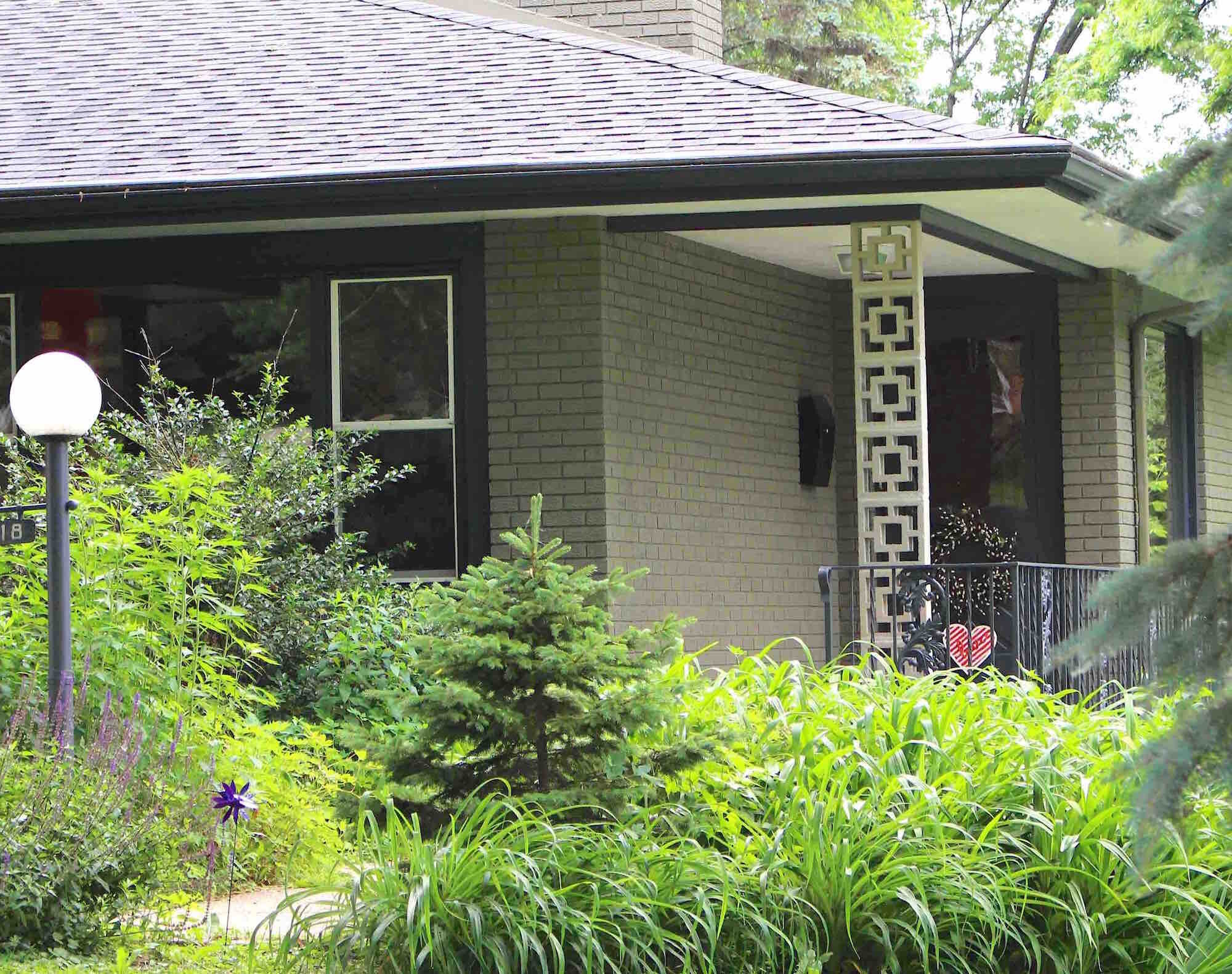Breeze Blocks
By Michael Bridgeman
Mid-Century Modern design has been hot for more than a decade. Though some chronologies show the movement emerging in the 1930s, its greatest influence was felt from the end of World War II in 1945 until about 1970, a period when many modern trends in architecture, furniture and décor blew across America from the West Coast. Among them was the breeze block.
A post on Curbed, An illustrated guide to SoCal breeze blocks, caught my eye last summer and described breeze blocks as “individual blocks, each pierced with the same shape, most commonly a cross or circle. Mounted together, they form a striking pattern.”
Since reading the article, I’ve spotted breeze block walls and screens across the Madison area. They were popular in midcentury residential neighborhoods like Sunset Hills, which is among the Historic Architecture Walking Tours, offered by the Madison Trust this summer.
A Mid-Century Modern house in Sunset Hills uses a column of breeze blocks to define the entryway. (Photo: Michael Bridgeman)
A low wall of breeze blocks separates the front yard from the entrance to this house on Merrill Springs Road. (Photo: Michael Bridgeman)
Curbed writer Jenna Chandler traces the breeze block boom to Edward Durrell Stone’s 1954 design for the American embassy in New Delhi, India, a simple box-like structure surrounded by a screen of patterned, foot-square blocks. Stone was adapting an old tradition in India (and other warm climates) of perforated and carved stone windows that allowed for wafts of fresh air while keeping out the hot sun.
This 19th century marble window screen at the Victoria & Albert Museum in London was made in Agra, India, in the 19th century and copied from earlier 17th-century models. (Museum no. 07071(IS).)
In 1958, Stone brought this idea to the United States by including a perforated block screen in his design for the Stuart Company Building in Pasadena, Cal. From there the breeze block proliferated across America. Breeze blocks may not be as plentiful here in the Midwest as they are in the hotter, more arid West. Still, there are plenty of examples, including concrete block screens on public and commercial buildings.
Click on thumbnails or arrows to the left and right to move through slides below. Mobile phones must be in landscape to view photo description.



While the fad may have peaked 50 years ago, Madison saw a spectacular new array of breeze blocks on Midvale Boulevard in 2013. A one-story ranch house was re-worked to become a modern two-story home with two concrete block screens facing the street. “They not only have durability and robustness because of the masonry,” architect Stephen Bruns told The Capital Times. “There’s a transparency and delicacy to it that doesn’t contain you in a detrimental way.”
Click on thumbnails or arrows to the left and right to move through slides below. Mobile phones must be in landscape to view photo description.



If you want to build your own breeze block screen, you can find decorative concrete blocks online and at some home improvement stores. You may be able to satisfy your itch with a pallet of tiny breeze blocks to erect a tabletop breeze block wall. As for me, I’m delighted to find more examples as I breeze about the Madison area.



